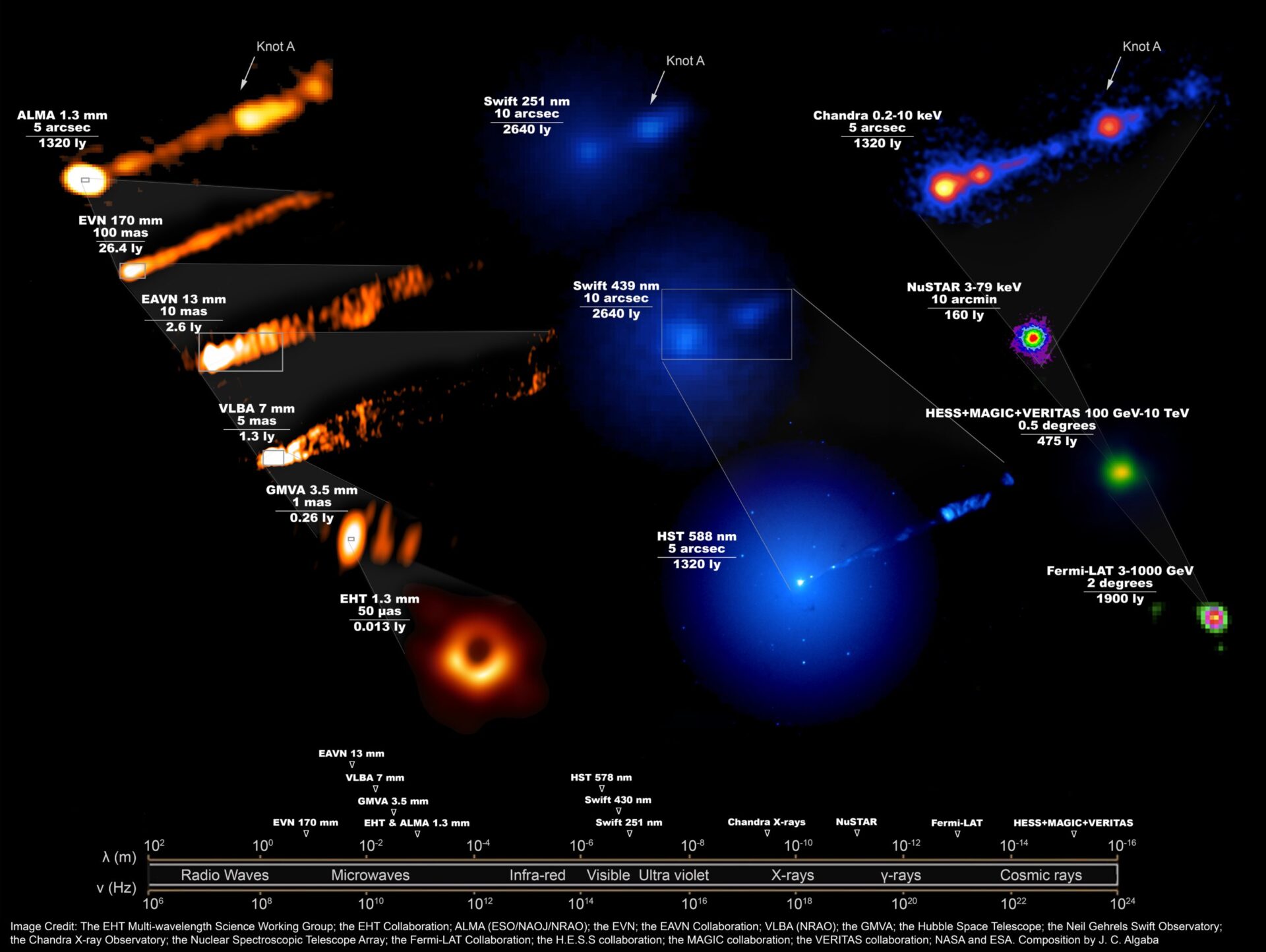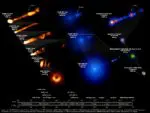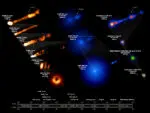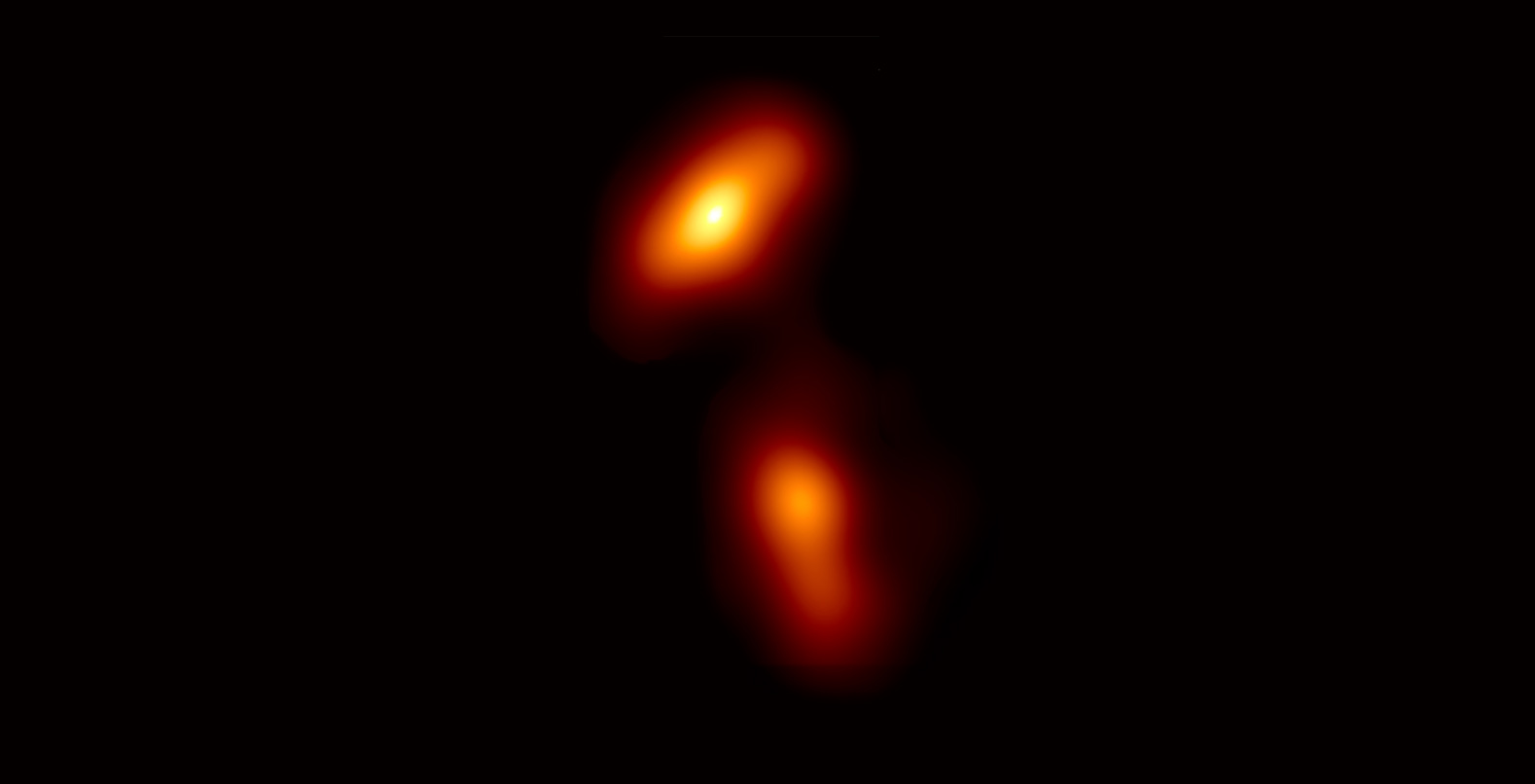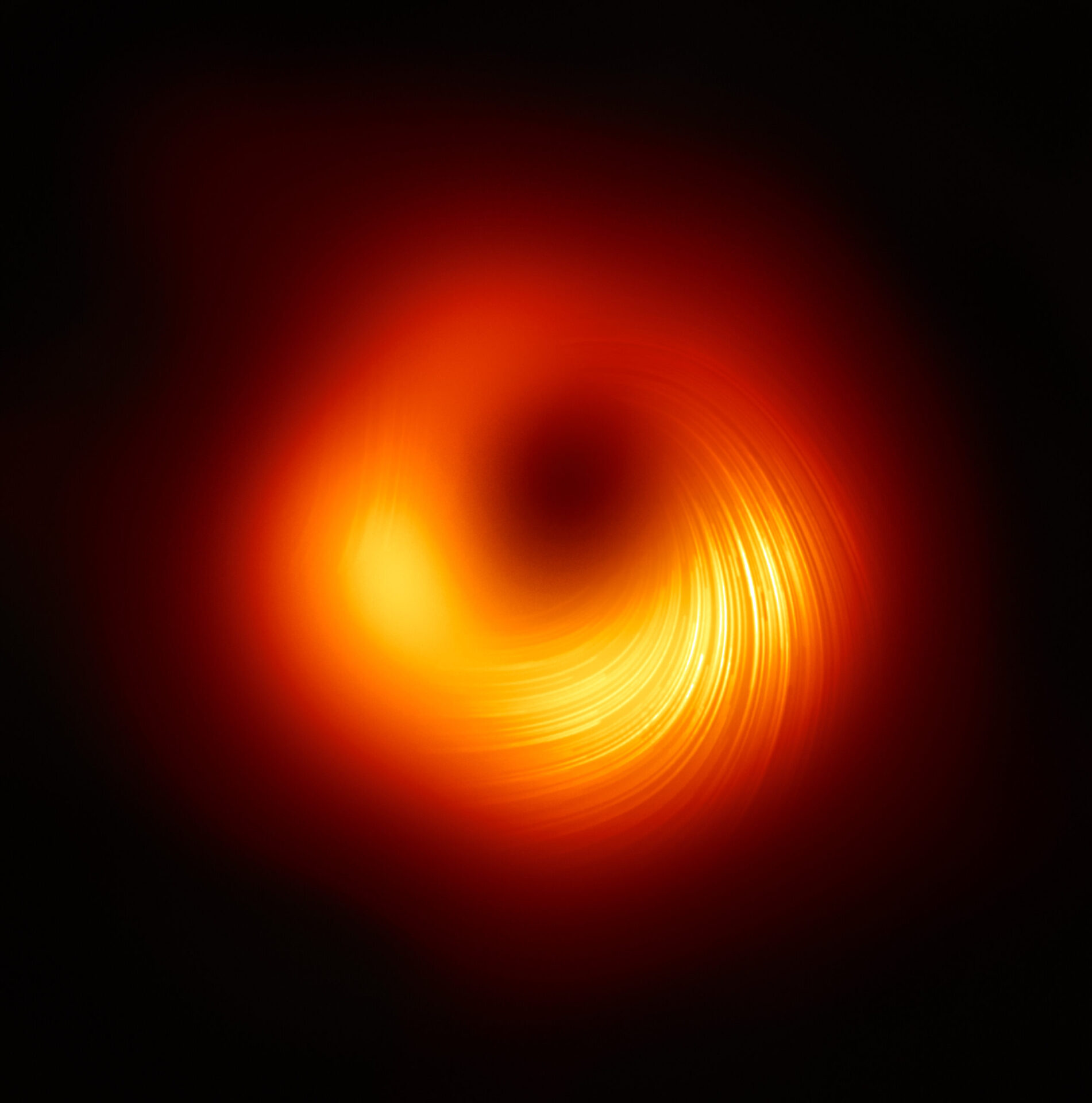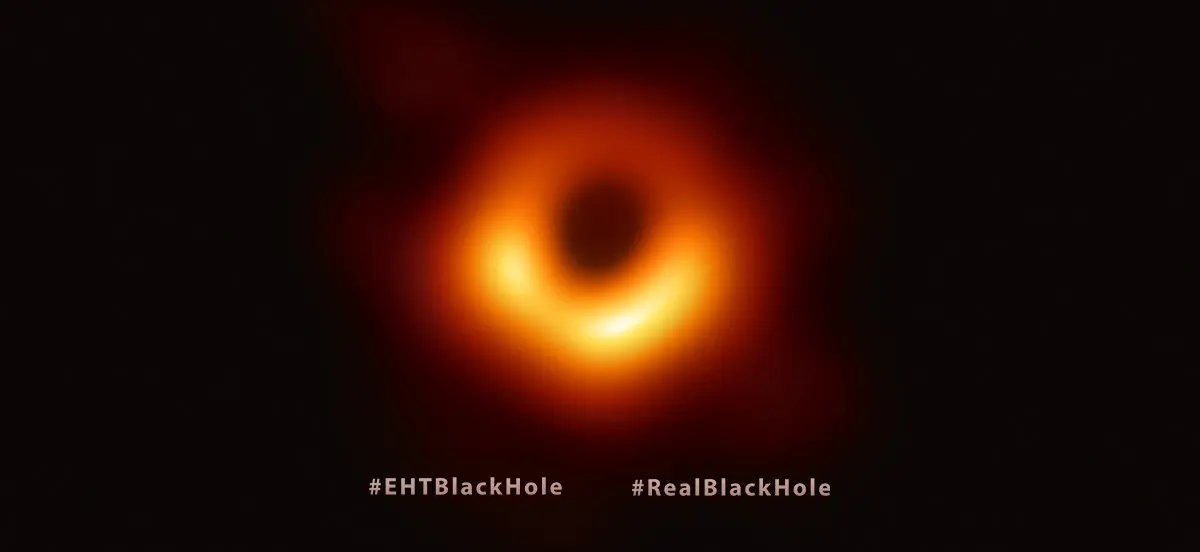Telescopes Unite in Unprecedented Observations of Famous Black Hole
In April 2019, scientists released the first image of a black hole in the galaxy M87 using the Event Horizon Telescope (EHT). However, that remarkable achievement was just the beginning of the science story to be told. Data from 19 observatories are being released that promise to give unparalleled insight into this black hole and the system it powers, and to improve tests of Einstein’s General Theory of Relativity. The Atacama Large Millimeter/submillimeter Array (ALMA) participated in the EHT observations in April 2017, and also produced an image of the larger scale jet emanated from the vicinity of the massive black hole.
“We knew that the first direct image of a black hole would be groundbreaking,” said Kazuhiro Hada of the National Astronomical Observatory of Japan, a co-author on the new study. “But to get the most out of this remarkable image, we need to know everything we can about the black hole’s behavior at that time by observing over the entire electromagnetic spectrum.”
The tremendous gravitational pull of a supermassive black hole can power jets of particles that travel at nearly the speed of light across vast distances. The result produces electromagnetic radiation spanning the entire range from radio waves to visible light, to gamma rays.
In this video, results from each telescope across the observing campaign reveal previously unseen structures and the impact of the black hole on its surroundings in regions spanning one to 100,000 light-years across.
“Understanding the particle acceleration is really central to our understanding of both the EHT image as well as the jets, in all their ‘colors’,” said co-author Sera Markoff, from the University of Amsterdam. “These jets manage to transport energy released by the black hole out to scales larger than the host galaxy, like a huge power cord. Our results will help us calculate the amount of power carried, and the effect the black hole’s jets have on its environment.”
To expand their view of the region around the 6.5-million-solar-mass black hole, scientists mounted a multi-wavelength observing campaign, including 19 ground-and space-based observatories working at gamma-ray, X-ray, visible-light, and radio wavelengths. The study used the Atacama Large Millimeter/submillimeter Array (ALMA) and the National Science Foundation’s Very Long Baseline Array (VLBA).
“There are multiple groups eager to see if their models are a match for these rich observations, and we’re excited to see the whole community use this public data set to help us better understand the deep links between black holes and their jets,” said co-author Daryl Haggard of McGill University.
This new study, reported in The Astrophysical Journal Letters, provides a valuable resource for helping scientists understand the physics of how such monster black holes operate and strongly affect their surroundings.
Additional Information
The Astrophysical Journal Letter describing these results is available here. This paper was led by 33 members of the EHT Multiwavelength Science Working Group, and includes as coauthors members of the following collaborations: the entire Event Horizon Telescope Collaboration; the Fermi Large Area Telescope Collaboration; the H.E.S.S collaboration; the MAGIC collaboration; the VERITAS collaboration and the EAVN collaboration. The coordinators of the EHT Multiwavelength Science Working Group are Sera Markoff, Kazuhiro Hada, and Daryl Haggard, who together with Juan Carlos Algaba and Mislav Baloković, also coordinated work on the paper.
Partner MWL facilities include: European VLBI Network (EVN); High Sensitivity Array (HSA); VLBI Exploration of Radio Astrometry (VERA); Korea VLBI Network (KVN); East Asian VLBI Network/KVN and VERA Array (EAVN/KaVA); Very Long Baseline Array (VLBA); Global Millimeter VLBI Array (GMVA); Very Large Telescope Interferometer GRAVITY Instrument (VLTI/GRAVITY); Neil Gehrels Swift Observatory (Swift); Hubble Space Telescope (HST); Chandra X-ray Observatory (Chandra); Nuclear Spectroscopic Telescope Array (NuSTAR); High Throughput X-ray Spectroscopy Mission and X-ray Multi-Mirror Mission (XMM-Newton); Fermi Large Area Space Telescope (Fermi-LAT); High Energy Stereoscopic System (H.E.S.S.); Major Atmospheric Gamma Imaging Cherenkov Telescopes (MAGIC); Very Energetic Radiation Imaging Telescope Array System (VERITAS).
The 2017 campaign involved a large number of observatories and telescopes. At radio wavelengths it involved: the European Very Long Baseline Interferometry (VLBI) Network (EVN) on May 9, 2017; the High Sensitivity Array (HSA), which includes the Very Large Array (VLA), the Effelsberg 100m antenna and the 10 stations of the National Radio Astronomy Observatory (NRAO) Very Long Baseline Array (VLBA) on May 15, 16 and 20; the VLBI Exploration of Radio Astronomy (VERA) over 17 different times in 2017; the Korean VLBI Network (KVN) over seven epochs between March and December; the East Asian VLBI Network (EAVN) and the KVN and VERA Array (KaVA) , over 14 epochs between March and May 2017; the VLBA on May 5, 2017; the Global Millimeter-VLBI-Array (GMVA) on March 30, 2017; the Atacama Large Millimeter/submillimeter Array (ALMA); the Submillimeter Array (SMA) as part of an ongoing monitoring program. At ultraviolet (UV) wavelengths it involved the Neil Gehrels Swift Observatory (Swift) with multiple observations between March 22 and April 20, 2017; and at optical wavelengths: Swift; and the Hubble Space Telescope on April 7, 12, and 17, 2017. (The Hubble data were retrieved from the Hubble archive because it was part of an independent observing program.) At X-ray wavelengths it involved the Chandra X-ray Observatory on April 11 and 14, 2017; the Nuclear Spectroscopic Telescope Array (NuSTAR) on April 11 and 14, 2017; and Swift. At gamma-ray wavelengths it involved Fermi from March 22 to April 20, 2017; the High Energy Stereoscopic System (H.E.S.S); the Major Atmospheric Gamma Imaging Cherenkov (MAGIC) telescopes, and the Very Energetic Radiation Imaging Telescope Array System (VERITAS).
The EHT Multi-wavelength (MWL) Working Group is a collective of EHT Collaboration members and external partners working together to ensure broadband MWL coverage during EHT campaigns, to maximize science output. The EHT collaboration involves more than 300 researchers from Africa, Asia, Europe, North and South America. The international collaboration is working to capture the most detailed black hole images ever obtained by creating a virtual Earth-sized telescope. Supported by considerable international investment, the EHT links existing telescopes using novel systems — creating a fundamentally new instrument with the highest angular resolving power that has yet been achieved.
The individual EHT telescopes involved are: ALMA, APEX, the IRAM 30-meter Telescope, the James Clerk Maxwell Telescope (JCMT), the Large Millimeter Telescope (LMT), the Submillimeter Array (SMA), the Submillimeter Telescope (SMT), and the South Pole Telescope (SPT). The Greenland Telescope, the Kitt Peak Telescope, and NOEMA joined EHT after the 2017 observations.
The Atacama Large Millimeter/submillimeter Array (ALMA), an international astronomy facility, is a partnership of the European Organisation for Astronomical Research in the Southern Hemisphere (ESO), the U.S. National Science Foundation (NSF) and the National Institutes of Natural Sciences (NINS) of Japan in cooperation with the Republic of Chile. ALMA is funded by ESO on behalf of its Member States, by NSF in cooperation with the National Research Council of Canada (NRC) and the Ministry of Science and Technology (MOST) and by NINS in cooperation with the Academia Sinica (AS) in Taiwan and the Korea Astronomy and Space Science Institute (KASI).
ALMA construction and operations are led by ESO on behalf of its Member States; by the National Radio Astronomy Observatory (NRAO), managed by Associated Universities, Inc. (AUI), on behalf of North America; and by the National Astronomical Observatory of Japan (NAOJ) on behalf of East Asia. The Joint ALMA Observatory (JAO) provides the unified leadership and management of the construction, commissioning and operation of ALMA.
Image
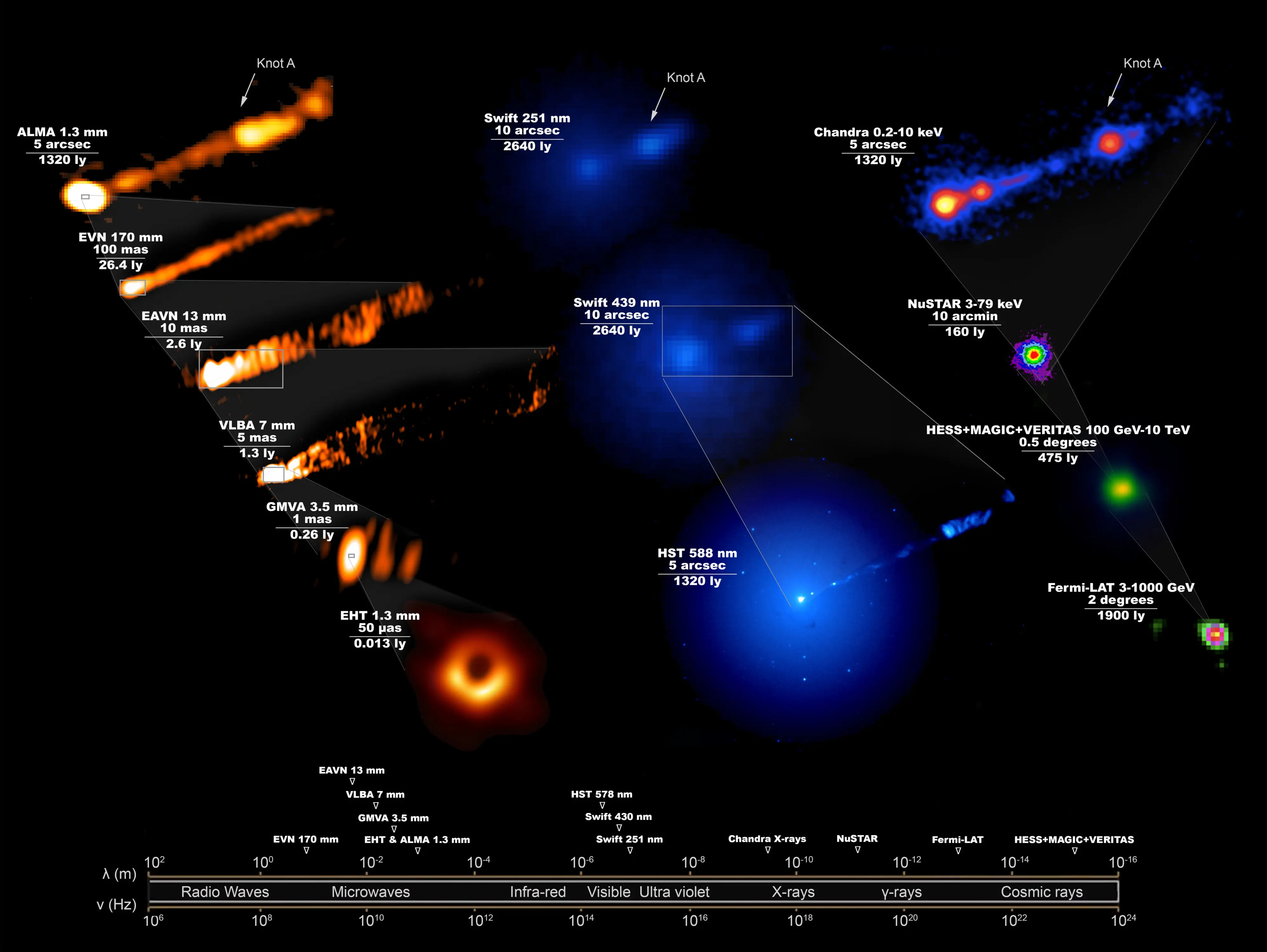
Videos
Contacts
-
Nicolás Lira
Education and Public Outreach CoordinatorJoint ALMA Observatory, Santiago - ChilePhone: +56 2 2467 6519Cel: +56 9 9445 7726Email: [email protected]
